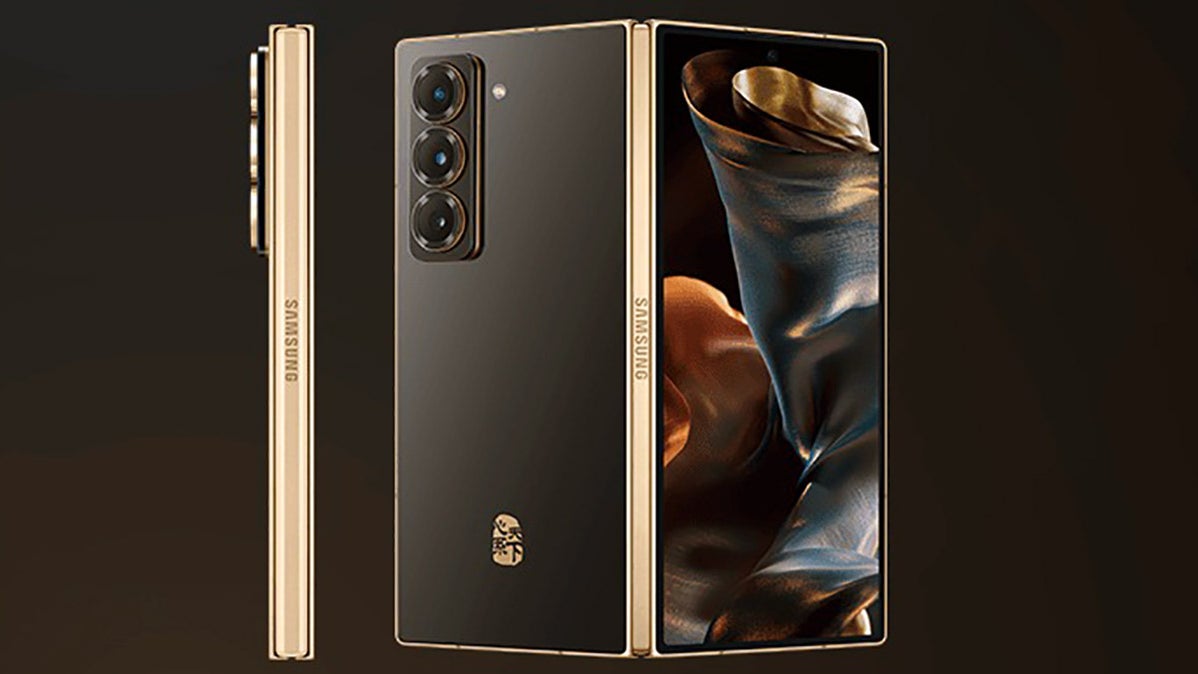Why? Well, it already spent a lot of time designing it, and, after it saw that it can’t make it as thin as the Chinese foldables and at the same time more durable, it simply decided to bet on the added value of durability, and release it in a limited number of markets.
Those include China, where Samsung’s main competition in the field comes from, but there the Galaxy Z Fold Special Edition is called the W25 and comes with in a tacky golden color and an even tackier $2,400 starting price. Wait, what? Why?
The Galaxy Z Fold Special Edition price is hinging on the hinge
One of the main reasons, besides all the R&D that Samsung poured into making the thinnest foldable phone it can make as an answer to the Chinese onslaught, is the component complexity. Just the hinge of the Galaxy Z Fold Special Edition contains twice the number of moving parts than the hinge of the fattier Galaxy Z Fold 6 sports.
The Galaxy Z Fold 6 hinge comprises cogs, arms, and all the hinge paraphernalia that uses up to 70 separate small components to make it close and unfurl seamlessly. In contrast, the Galaxy Z Fold Special Edition hinge has nearly 140 tiny parts in it, and has been developed in cooperation with Samsung’s long term partner KH Vatec from the home turf in Korea that makes sturdy but rather expensive hinges.

Galaxy Z Fold Special Edition size | Image credit – Samsung
Would you like titanium or ceramic with that?
The Galaxy Z Fold Special Edition has a titanium backplate, making for a lighter and thinner yet just as sturdy as the regular Z Fold 6 device. Samsung’s phones in the Fold line typically use plastic backs reinforced with carbon fiber because they have to support the S Pen stylus, and a metal backplate would’ve introduced interference to the extra digitizer layer.
Samsung eschewed the S Pen support hence the digitizer layer in the Galaxy Z Fold Special Edition screen in order to make it thinner and lighter, so it could use anything its heart desires for the backplate.
In China, for example, Samsung’s heart desired a ceramic backplate for the Galaxy W25 version of the Z Fold SE. This will undoubtedly give it a more premium feel, but adds another $400 to the already exorbitant Z Fold Special Edition price.
A 140-part hinge? Titanium? Ceramic? Those things don’t come cheap to order or manufacture, but there is more.
The Ultra camera and ultra display
The Galaxy Z Fold Special Edition comes with a 7.99-inch display, the largest that Samsung has put on a foldable. The screen offers 2184 x 1968 (QXGA+) pixels resolution, 2,600 nits of peak brightness, and 120 Hz dynamic refresh rate, beating the Z Fold 6 panel when it comes to its specifications.
Again, the rear cameras that are capable of 3x optical zoom aren’t up to par with the Chinese or Google foldable phones that are already using periscope zoom lenses, but it is still the best set Samsung has ever put on a foldable and that has added to the manufacturing costs.
The special Z Fold was bound to be expensive
All in all, Samsung sank so many R&D and component resources into the making of the Galaxy Z Fold Special Edition, that a higher price was inevitable, despite that the original idea may have been to make a cheaper foldable without S Pen digitizer.
Seeing what the competition came up with mustn’t have been easy for Samsung, resulting in the mission creep that is the Galaxy Z Fold Special Edition, its pricey first crack at a more elegant foldable phone.
